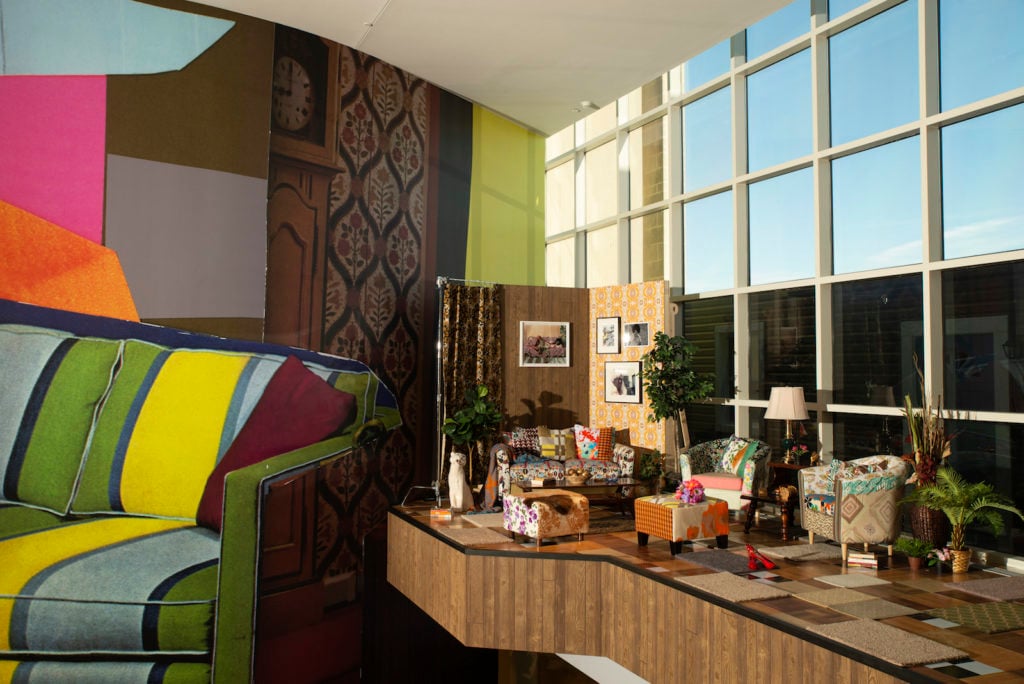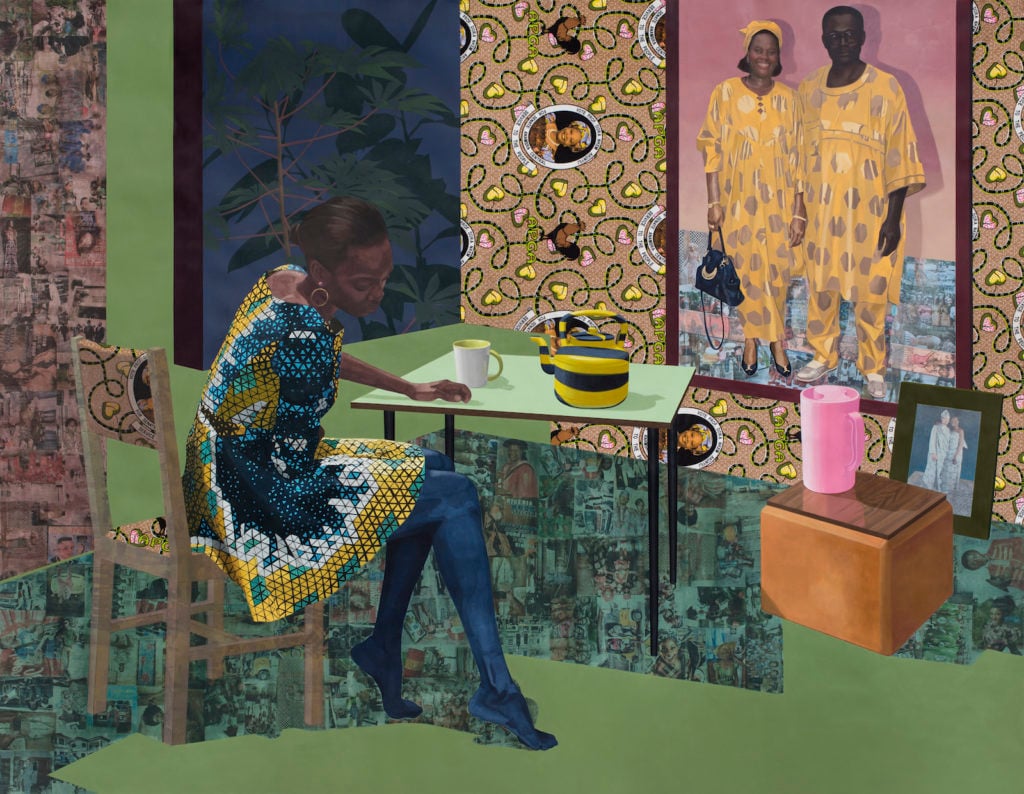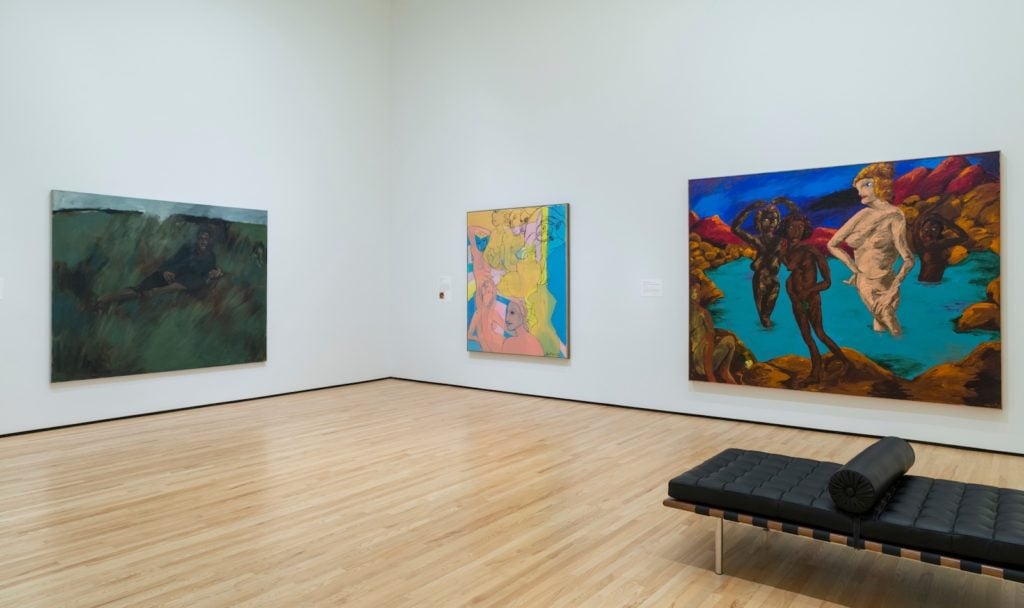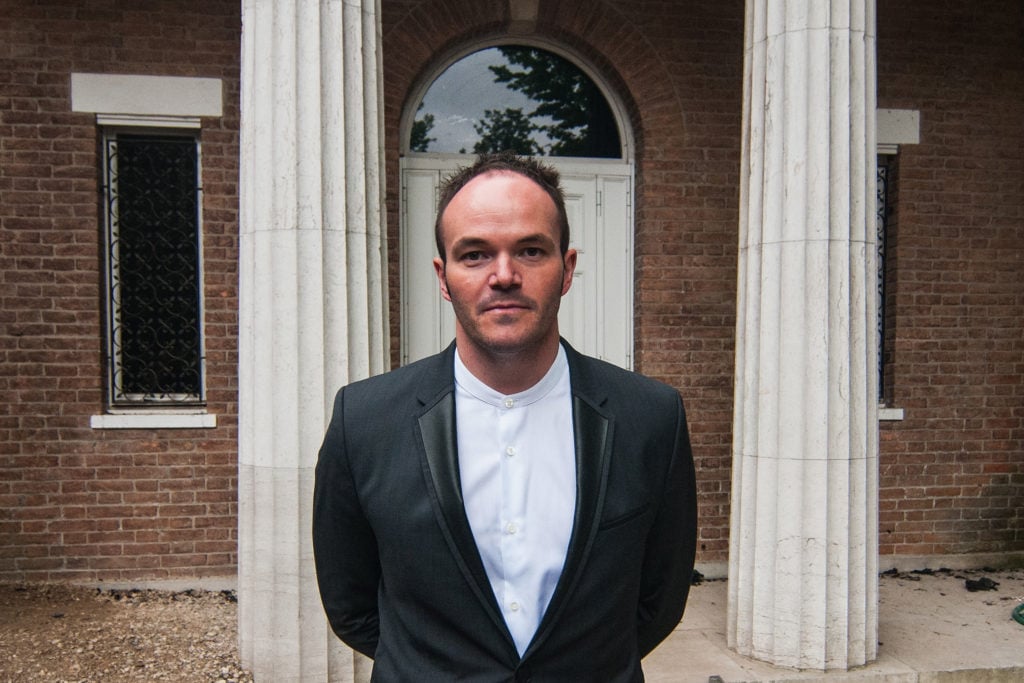Under the leadership of director Christopher Bedford, the Baltimore Museum of Art has set itself ambitious goals and has taken unconventional steps to get there. Last month the institution proclaimed that since its own collection is grossly weighted in favor of work by male artists, the museum will buy work by women artists exclusively during 2020 in order to “rectify centuries of imbalance.” What’s more, in order to fund those acquisitions, the museum has sold off a number of works by white men, including Andy Warhol and Robert Rauschenberg to fund the purchases. While the museum’s acquisitions budget has previously been about $475,000 a year, thbis time around the museum will devote $2 million dollars toward buying women’s work in a single year.
The resolution was hailed in some quarters, with Bianca Kovic, director of New York’s National Association of Women Artists, telling the Baltimore Sun that “What the Baltimore museum is doing is so cool. We think all museums should do it.” But for what one might have expected to be solely a feel-good announcement, the initiative—dubbed Vision 2020—has met with spirited pushback from both men and women.
In BmoreArt, some twenty-seven women in the arts weighed in with skepticism and tough questions as well as some praise. Some were concerned that the museum was doing too little; artist Betty Tompkins warned against tokenism, while Jackie Copeland, director of the Reginald F. Lewis Museum of Maryland African American History and Culture, wrote, “I know Chris’s heart is in the right place, but is this enough to change the entire culturally biased art establishment?”
Elsewhere online, the complaints were even more vociferous, which might have been expected in a moment of toxic masculinity and online hazing of women. “Baltimore Museum of Art to Officially Discriminate Against Men in 2020,” reads the headline at A Voice for Men. “Baltimore Museum of Art Reaches New Level of Virture Signaling,” writes the Western Journal, whose author dismisses the museum’s link to the centennial of (white) women getting the right to vote, asserting that “art has never excluded women in the same way as American politics have.” (The statistics tell a different story.) Bringing some humor to the mix, Red State declares that by the end of 2020, “Baltimore Will Have Bought-A-Less.”
Bedford spoke to Artnet News about whether the museum would be able to change direction so quickly, and about the pushback from vocal critics.

Installation view of “Mickalene Thomas: A Moment’s Pleasure” at The Baltimore Museum of Art. Photo by Mitro Hood.
You sought institution-wide approval for your plan to sell works by white men in order to fund buying works by women. I imagine there will be a magnifying glass on the new acquisitions. Will there be more consensus sought within the museum than there is for routine acquisitions?
In big institutions like the BMA, the process of proposing an acquisition, then presenting it to the accessions committee, the executive committee, and the full board, is an incredibly rigorous process anyway. While in the insular museum world there’s a common understanding of how acquisitions processes unfold, I’m not sure that understanding prevails beyond museums’ walls. Given the extent of public interest, we have a good opportunity to reveal the process by which we make these determinations with more transparency and candor than you usually see.
You’ve said that just 4% of the museum’s holdings were created by women. Do you have any idea of what percentage change you’ll be able to achieve by the end of 2020, or will you just assess that at the year’s end? I imagine it would be difficult to set a goal since you’ll also accept gifts, including works by male artists, right?
Right. But while I don’t think the percentage of works in the collection is going to shift that radically, we do have a commitment toward buying major works that are presentation-worthy on a near-constant basis. We will be going after major things that theoretically will become hallmarks of the collection, and while those hallmarks might not shift our numbers radically, they will shift what we present to our public on a day-to-day basis. If a wall changes completely, that’s at least as significant as upping the percentage by one or two points.
Considering that, as you said, there is already such a process in place for getting purchases approved, it seems like it might be administratively difficult to spend about four times as much money on acquisitions, subject to the same sort of process, no?
[laughs] I would respectfully differ with you on that point. Our curators have a great deal of vim and vigor. They are not short on ideas, and they are not short on ambition. They want to populate their galleries with major works. They’ve probably been waiting their entire careers for a moment like this. Curators are very acquisitive. That’s why they are good at their jobs.
In the responses to the news in BmoreArt, Betty Tompkins writes about museum acquisitions processes that “this kind of process and presentation is enormous, and it can take years to reach a verdict.”
I would respectfully push back on that. The metabolism at museums is much more a matter of habit than of mandate. We have very incredibly willing partners in dealers and auction houses. The metabolism of both of those is quite different from a museum.
Might there not be a painful moment if an irresistible work by a male artist came on the market at a price you could afford? Wouldn’t it be difficult to pass that up?
I think the rightness and the virtue of the direction that we have assumed for ourselves will be the balm to that pain. Inevitably there will be something fabulous, but our commitment rests on a bigger picture for the development of the collection, and I would prefer to stand by the principle than give in to the temptation of a single object.

Njideka Akunyili Crosby, Dwell: Aso Ebi, 2017. The Baltimore Museum of Art.
You’ve planned a year of temporary exhibitions devoted to female and female-identifying artists. Will the display of collection works reflect the same vision within 2020 too, or will it take a little more time to integrate the new works?
It’s my expectation that the curators are buying presentation-worthy and presentation-ready works, and if they’re not acquiring in anticipation of immediate placement, they will have a plan for the incorporation of those works in the calendar year. Of course there will be some exceptions. But there is a collective understanding that while there is not a definitive plan, they’re buying for the galleries, not for storage.
Without quoting anyone, of course, can you comment on what the response from other museum directors has been?
The healthy questions that other curators and museum directors have are less about the virtuousness of the direction and more about, How do you engineer a successful realization within the bounds of institutions that have traditionally moved very slowly toward change?
One thing the BMA rests on, and I think this is enormously important, is that it is a museum built largely by women. The first director was a woman, as was one of the most notable directors, Adelyn Dohme Breeskin, who was responsible for bringing the Cone collection to the museum. She was also the commissioner for the Venice Biennale in 1960. Sue Cohen, our former board chair, provided the endowment to make the museum free. Our current board chair, Clair Zamoiski Segal, is a woman who has a very pronounced feminist agenda in everything she does.
So the various pieces of the puzzle are very much in place to help us realize a vision in acquisitions and exhibitions that actually begins to align with this part of the museum. It’s tremendously important that there be symmetry in the way we present publicly, through our creative programs, and the way that the institution has been built over a century. The building process has largely been undertaken by women leaders, and I think it’s high time that the creative program develop a symmetry with that history. That’s where we’ve gained the most traction and why we’ve been able to move so quickly in this direction. It’s in our blood.

Galleries at the Baltimore Museum of Art. Photo by Mitro Hood.
There has been some brisk pushback from both men and women. At BmoreArt, several critics weighed in: Maura Callahan worries about relying on women as spectacle; Jillian Steinhauer says that $2 million is not enough money, and that you need a plan for beyond 2020; and Suzy Kopf says this is premature bragging, and that she would rather hear about this initiative after the fact. Did any of this give you pause?
One criticism had to do with the relationship between my being a spokesperson for this initiative as a male—and the generations of preceding women leaders, who have done a lot of good work for many many years, having made limited headway by comparison or who garnered limited attention by comparison—and asking, “Isn’t that a structural problem?” That did cause me to pause. Probably the level of attention garnered by me and this museum in this announcement is itself reflective of the systemic sexism we’re trying to combat with this policy. That doesn’t mean that I would change my position. I still believe we’re doing the right thing, but it does throw into high relief the fact that others have been doing the right thing for many years without the acknowledgement that we’re getting.
Men have been weighing in, saying this is discrimination, that women haven’t been discriminated against in the art world, and so on. What do you make of that?
To suggest that the art world is not subject to the same strains of sexism that have structured society more broadly would be to suggest that the art world is not part of society, and of course we are, so those same structural biases have structured our activities. So, our exhibition decisions have been reflective of sexism over decades.
I would rely on simple numbers. If in the present, by a hair, the majority of the population in the United States is female, and if historically you’ve had a fifty-fifty split in society, and you have museums that have single-digit percentages of their collections being women artists, it would be impossible to make the claim that that percentage division is based on pure merit. If merit were the only factor taken into account when making acquisitions or planning exhibitions, you would see a far more equitable distribution.
One of the ideas we use at the BMA, particularly with reference to the representation of artists of color, is that there is a tremendous difference between fairness and equity. So if we were being fair, and blind to the past, sure, one would collect, based on merit, a roughly fifty-fifty split of men and women. But the fact of the matter is that we have been inequitable for a very long time. It’s an opportunity to look to holes in our collection and exhibition history that were made by that bias. So to distort attention toward that task in the present, to me, is a way to inch toward equity.
Follow Artnet News on Facebook:
Want to stay ahead of the art world? Subscribe to our newsletter to get the breaking news, eye-opening interviews, and incisive critical takes that drive the conversation forward.











